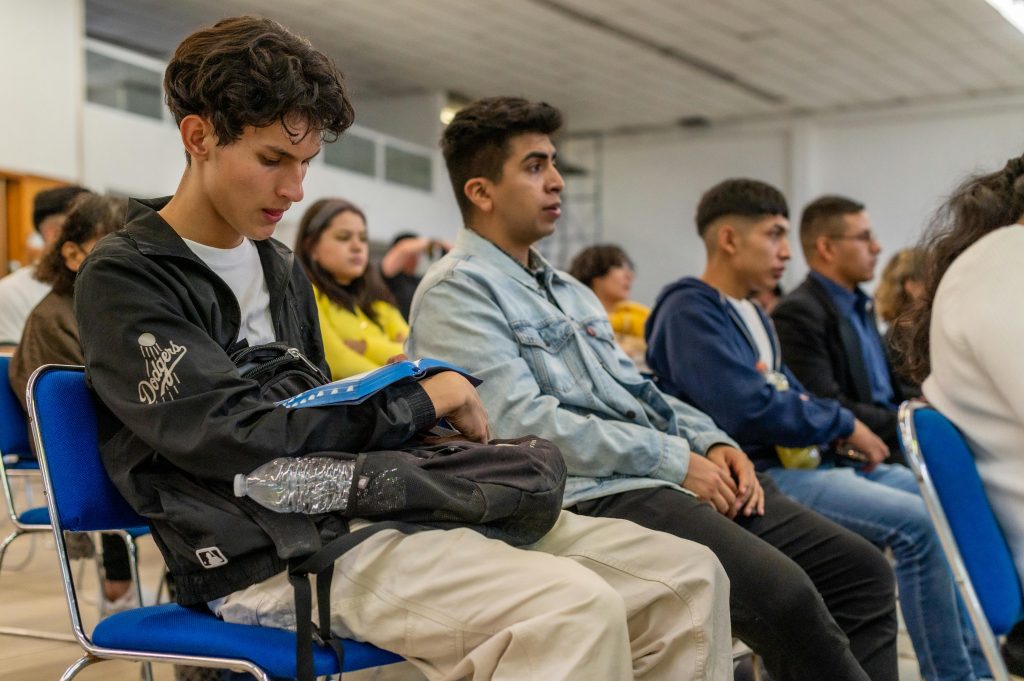Immigration to the USA via a Student Visa

How to Immigrate to the USA through Education
Unlike other methods, this type of immigration to the USA is semi-legal but remains a popular way to enter the country, settle there, and eventually naturalize. Many people, due to various circumstances, cannot secure a job with an American company or win the DV Lottery, so they resort to studying in the USA. Essentially, immigration through education is just a way to cross the U.S. border and establish yourself there for a year or even several years until employment issues are resolved. To begin the process of immigration through education, you first need to obtain a specific type of visa, after which you can explore further options for settling and naturalizing.
What Types of Student Visas are Available in the USA? Types and Differences of Student Visas
F Visa
The most common visa used as a method of immigration to the USA. This type of visa not only allows you to cross the U.S. border, but it also grants permission to work, though with certain restrictions. For more details, see here.
M Visa
The second most popular visa used for immigration. It offers fewer opportunities compared to the F-1 visa, but it is intended for education with up to 20 academic hours per week without the right to work. For more details, see here.
These two types of visas differ in terms of the duration of stay and whether or not they allow you to work while studying. Most often, immigrants choose the F-1 visa due to its broader opportunities for legal employment, but even the M-1 visa allows you to gain a foothold in the U.S. to eventually transition to other statuses.
The Student Visa Application Process: Required Documents and Procedure
To start the student visa application process in the USA, you need to:
- Request the U.S. educational institution to approve the I-20 form, which is the foundation of the student visa application process.
- Complete and print the DS-160 electronic form.
- Have a valid passport with an expiry date at least 6 months beyond the intended date of completion of your studies.
Important: If you plan to study for, say, 5 years, but your passport is valid for only 3 years, you can confidently apply for a 2-year period first. You can then extend the I-20 form status for another 2 years, and after that, for another 2 years. You can get a new passport at your country’s consulate within the U.S.
- A 5×5 cm photograph as per the established format.
- Payment of the $160 consular fee.
- Payment of the $350 SEVIS fee.
- Register on the applicant registration website, where you will provide your passport number, receipt number for the consular fee payment, and the ten-digit number indicated on your DS-160 form. You must also bring the necessary documents, along with the payment receipts for the consular and SEVIS fees, to your interview.
You must also have documents proving your education and a bank statement demonstrating sufficient funds for your stay in the U.S. Additionally, if the applicant is a young student, it is advisable to provide proof that their parents or sponsors have enough funds to support their stay.
Immigration to the USA through Education: How Much Does It Cost
The cost of education in the USA is quite complex to calculate as it involves several stages:
- Payment of the application fee to obtain the I-20 form. Each university, college, or educational institution has its own fee for submitting such an application. This amount includes the cost of transporting documents to the future student via a reliable delivery service. On average, this costs around $500.
- Consular fee – $160.
- SEVIS – $220.
Thus, at the application stage alone, the average cost is approximately $880 for the entry fee and application processing.
Next, you need to have an amount proportional to $1,200 or more for each month of study, as stated in the application. For example, if you indicate that you want to study for about 12 months, the bank statement you present to the consulate must show an amount of around $14,400 or more. This sum will be used for accommodation and food expenses. The figure mentioned assumes a student renting a shared apartment with friends, and the actual expenses for rent and food may vary. Additionally, the university requires a tuition fee, and if this has not been paid in advance, it must also be available in the account.
Therefore, the minimum amount required to study for one year in the USA is at least $15,200 plus the cost of tuition.
If the prospective student has received a grant that covers the cost of tuition, this can be used as proof that part of the expenses is already paid.
How to Move to the USA through Language Courses
This is another “loophole” through which you can move to the USA. Some language schools have developed programs that offer 20 academic hours of study per week, allowing students to fully immerse themselves in the learning process and obtain an F-1 visa. To move through language courses, you need to choose a language school and follow the same steps required to obtain an F-1 or M-1 visa. The process is essentially the same, except that the visa officer will also expect a short motivational speech from the applicant on the topic “Why I need language courses and where I plan to use them.”
How to Stay in the USA After Studying
So, we’ve made it to the USA, settled all the necessary issues, and are studying. Our studies are coming to an end, but we want to stay. For instance, we may have moved not for a typical university or college program but for something like regular language courses. In this case, we need to “change the status” of our stay.
Depending on the type of visa we had, we still have some time left for internships. During this internship period, we must find a place where we can work in the field of our studies, start earning money to support ourselves, and proceed with changing our status or securing our place in the USA.
The first thing that may come to mind is the H-1 visa, which provides an opportunity for internships in the USA. To obtain this, you need to find a potential employer and sign a contract for the internship. There are companies that specialize in offering internships to international students.
Another option to consider is the H-1B, H-2A, or H-2B visas, which allow you to work legally in the USA.
If, during your stay in the United States, you have become a blogger, received awards, or achieved notable success in your activities, you may apply for an O-1 visa for people with extraordinary abilities and, just like with the H-1B, be employed by a U.S. employer.
It’s important to remember that planning for the next stage should be done in advance, preferably from the very beginning of your stay in the USA.
How to Get a Work Visa and Legalize Your Stay in the USA After Studying
As mentioned above, there are work visas. To obtain a work visa in any category, the first step is to create a strong resume. In the USA, a resume is a crucial or even the most important step in securing a job. After creating your resume, you need to actively send it to potential employers. For example, if you’ve studied to become a lawyer, doctor, or programmer, it’s worth submitting your documents to the relevant Law Offices, Medical Centers, or any company that potentially needs programmers for employment. It’s not guaranteed that you’ll get accepted on the first try, but by sending your resume to a hundred different companies, you have a high chance of going through several interviews where you may be offered a job.
Table of Contents


